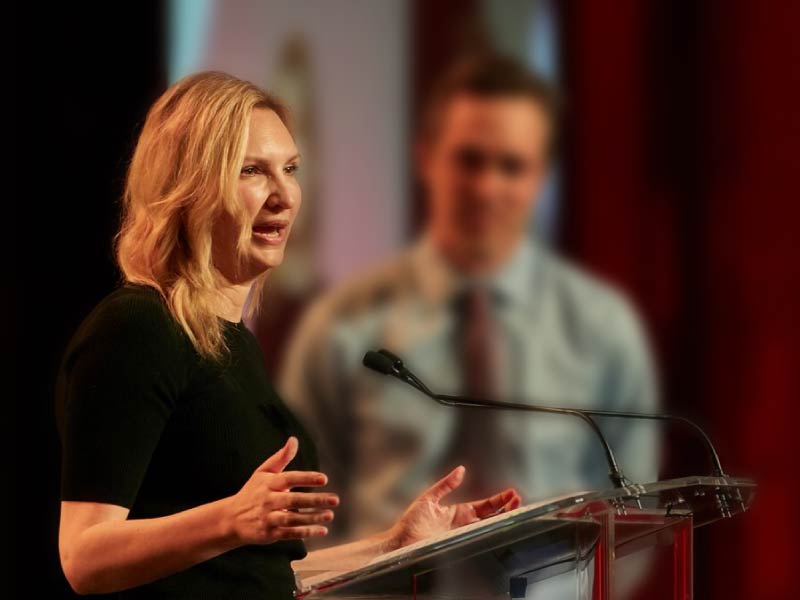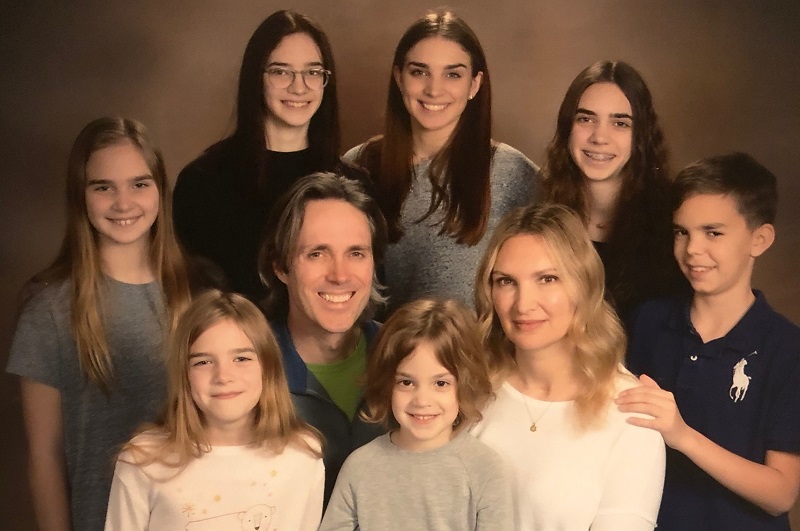Torn heart artery put young mom on verge of death
By American Heart Association News

As Jara Herron walked down her hallway to feed her 10-day-old baby, she didn't feel right. She was nauseous. Her chest felt like elephants were sitting on it. Then Herron tried to pick up her baby and couldn't. Her right arm went numb and she could barely breathe.
Her husband dialed 911.
When paramedics arrived, they told Herron's husband she was having some sort of "heart situation." Then Herron went into cardiac arrest. Medical personnel performed CPR for more than an hour, nearly losing hope, when they detected a faint heartbeat.
"There was some sort of miracle there," said Dr. Thomas Kalapura, Herron's cardiologist.
Herron was airlifted to St. John's Medical Center in Tulsa, Oklahoma. Along the way, paramedics shocked her heart three times to keep it in rhythm.
At the hospital, doctors determined Herron had a spontaneous coronary artery dissection. SCAD is rare and occurs mostly in women at an average age younger than 50. Women who have recently had a child can be at higher risk.
Herron, who was 39 on that day in September 2011 and had just delivered her sixth child, had her left artery torn in half. Doctors stabilized her by inserting six stents to repair the torn artery.
But Herron was far from healed. It was the beginning of a rollercoaster of health issues and near-death experiences.
Doctors put Herron on the heart transplant list, but the transplant hospital denied her because the rest of her organs were failing. Then, they placed her in a medically induced coma to help her body heal.
Her family braced to say their goodbyes. A priest was summoned to give her last rites.
She survived and was brought out of the coma. But she still had a gastrointestinal bleed, among other issues, that would require surgery.
She again received last rites. But before doctors could operate, they had to repeatedly resuscitate her because her pulse rate kept dropping. During surgery, doctors removed 75% of her colon. She also received a heart pump, which Kalapura credits with helping save her life.
After the operation, doctors placed Herron in a second medically induced coma, but they soon had to determine if she could survive on her own. They stopped the coma-inducing drug, and about 48 hours later, she woke up without any obvious signs of long-term damage.
"My husband said that he could tell from looking at me that I was normal," Herron said.
How normal?
Well, three years after it began, in 2014, Herron became pregnant with her seventh child. Friends and doctors were alarmed – as was Herron, initially. Then she thought, "I couldn't see how that would be God's plan, to go through all of that and then die from getting pregnant."
Her youngest child was delivered in the same ICU where Herron had been kept alive. The same nurse who wheeled her into that room in 2011, wheeled her in for the delivery.

Herron was featured last fall in an American Heart Association Go Red for Women video and is now back to running her namesake spa and salon. She has a defibrillator and pacemaker, and takes blood thinners, beta blockers and diuretics.
"The goal of my team of doctors is to never need a heart transplant," she said. "My heart is compromised but it's not compromising. No one would ever know that anything was wrong with me."
Stories From the Heart chronicles the inspiring journeys of heart disease and stroke survivors, caregivers and advocates.
If you have questions or comments about this story, please email [email protected].





